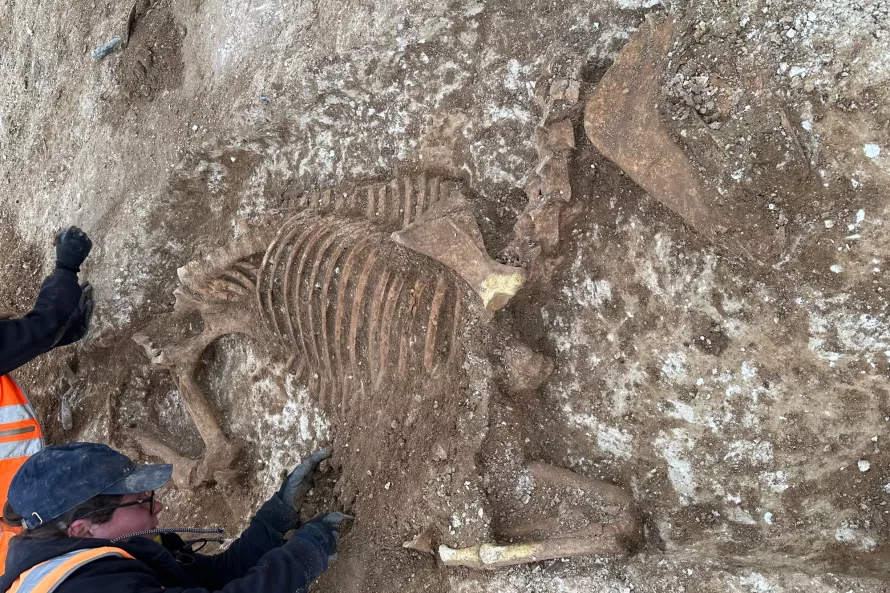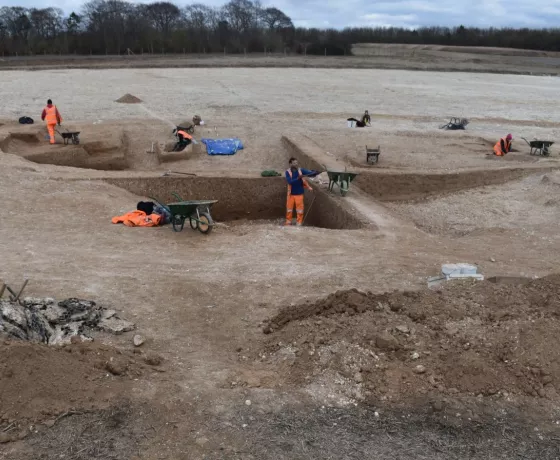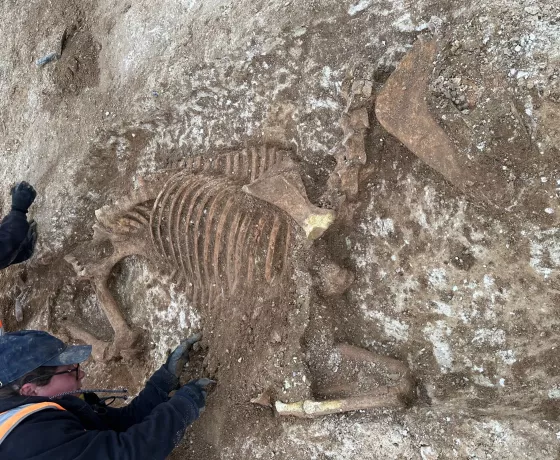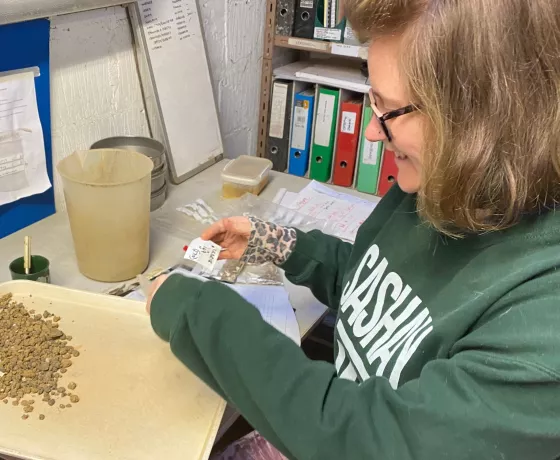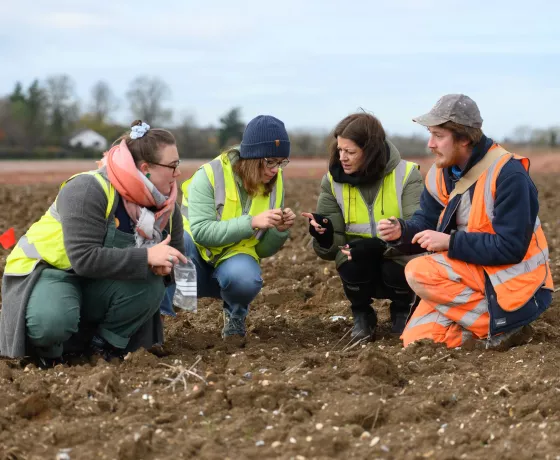Area 7 appeared to be a quiet area in terms of archaeology. This is one of the smaller areas we're digging at Hinxton, to try and understand the northern edge of the Roman trackway. Once excavated, the trackway itself was quite shallow, with small ditches running adjacent each side. This is a typically modest rural routeway that would have connected a settlement with its enclosures and pastureland, leading onto other settlements and more major trackways for trading.
Besides the trackway, there's a number of pits, most of which turned out to be modern activity or natural features however, there was one archaeological feature that came as a surprise – a horse burial. This type of practice was not uncommon during the Roman period, but was also an earlier practice in prehistoric societies in Britain.
From the size of the skeleton, and the fact that its spine had not yet fused, we can assume that this was a young horse. It was fully intact and intentionally placed within a grave, which means that it was not reared for butchery and possibly held some importance or meaning to its owner. This could be interpreted in many different ways. Was it buried as a beloved companion? Did it die of natural causes, or was it an offering to the gods for a fruitful harvest? Was it simply the disposal of a working animal that died and was afforded with some basic respect?
Animal burials such as this often signifies their value in the local economy. Horses were heavily relied upon for working the fields and milling grain, and for transporting goods and people. They played a central role in Roman daily life, in a society that was highly mobile and moved across landscapes with the seasons, and therefore it is perhaps unsurprising that we find evidence of special treatment when they die.
As there were no finds within the grave that could help to contextualise or date the burial, we have to look for evidence close by for some clues. The grave was dug parallel to the trackway, about 30m away. This suggests some connection between the two – it is possible that the trackway was in use at the time the horse was buried. Radiocarbon dating of the horse’s bones will help to prove, or disprove, this hypothesis. We have found evidence of a laid surface of stones on the trackway. We've interpreted this as a sign of the need to stabilise a trackway surface, whether from overuse, degradation from bad weather, or for ease of passage for animals, all reiterating a continual reliance on the trackway by its users.
Further analysis of the bones and the soil within the grave will help us to better understand this horse burial after the excavation. For now though, Area 7 is finished. The team are concentrating on Areas 4 and 3, with Bronze Age and Iron Age/Roman activity, and a continuation of the same trackway. There are also some interesting looking archaeological features that could reveal some exciting glimpses into the inhabitants of this landscape… but that’s for another blog post.
Other posts in this collection
Read our latest posts about the archaeological investigations at Hinxton.

